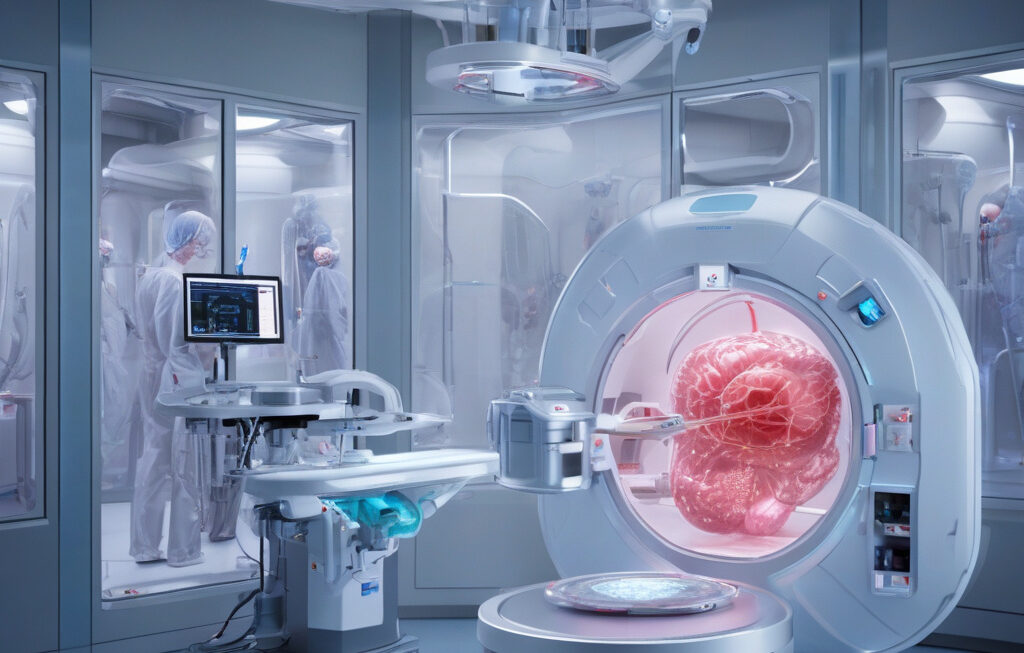Adaptive Optics Meets AI for Cellular-Scale Eye Care
In the realm of healthcare, advancements in technology have paved the way for groundbreaking innovations that were once deemed impossible. One such innovation that is revolutionizing eye care is the convergence of adaptive optics and artificial intelligence (AI) to achieve cellular-scale imaging of the retina. This intersection of cutting-edge technologies is not only enhancing our understanding of ocular health but also holds the potential to transform the field of medicine as a whole.
The retina, a thin layer of tissue located at the back of the eye, plays a crucial role in vision. Beyond its role in visual perception, the retina also serves as a window to the body, offering valuable insights into one’s overall health. By examining the retina, healthcare professionals can identify a myriad of systemic risks, including cardiovascular and metabolic conditions. In fact, retinal biomarkers have been found to reveal systemic risks, linking eye imaging to the management of cardiometabolic diseases.
Traditionally, imaging the retina at a cellular level was a challenging task due to the eye’s complex structure and the limitations of conventional imaging techniques. However, the advent of adaptive optics has transformed this landscape by enabling researchers to visualize individual cells within the retina with unprecedented clarity. Adaptive optics technology works by compensating for aberrations in the eye, allowing for high-resolution imaging that was previously unattainable.
When coupled with AI algorithms, adaptive optics imaging becomes even more powerful. AI has the ability to analyze vast amounts of data quickly and accurately, making it an invaluable tool for interpreting the intricate details captured through adaptive optics imaging. By leveraging AI, healthcare providers can not only detect subtle changes in the retina that may indicate underlying health conditions but also predict the risk of future disease development.
The implications of this technology are far-reaching. For instance, in the realm of cardiometabolic disease management, cellular-scale imaging of the retina can provide early indicators of conditions such as diabetes, hypertension, and atherosclerosis. By detecting these conditions in their nascent stages, healthcare professionals can intervene proactively, potentially preventing the progression of these diseases and improving patient outcomes.
Moreover, the marriage of adaptive optics and AI has the potential to personalize healthcare in ways previously unimaginable. By analyzing an individual’s retinal biomarkers and correlating them with systemic health risks, healthcare providers can tailor interventions to suit the specific needs of each patient. This precision medicine approach not only enhances the quality of care but also reduces healthcare costs by avoiding unnecessary treatments and interventions.
As with any innovative technology, the integration of adaptive optics and AI in eye care is not without its challenges. Ethical considerations, data security concerns, and the need for extensive validation studies are all critical aspects that must be addressed as this technology continues to evolve. However, the promise that this technology holds in terms of improving patient outcomes and advancing our understanding of human health makes it a field worth investing in.
In conclusion, the fusion of adaptive optics and AI for cellular-scale eye care represents a paradigm shift in the field of medicine. By harnessing the power of these technologies, healthcare providers can delve deeper into the complexities of ocular and systemic health, leading to earlier disease detection, personalized treatment strategies, and ultimately, better patient outcomes. As we navigate the ever-changing landscape of healthcare, innovations like adaptive optics and AI remind us of the incredible potential that technology holds to transform and enhance our lives.
retinal biomarkers, systemic risks, eye imaging, cardiometabolic disease management, adaptive optics, artificial intelligence, AI algorithms, cellular-scale imaging, healthcare, precision medicine, patient outcomes, technology evolution, data security.












